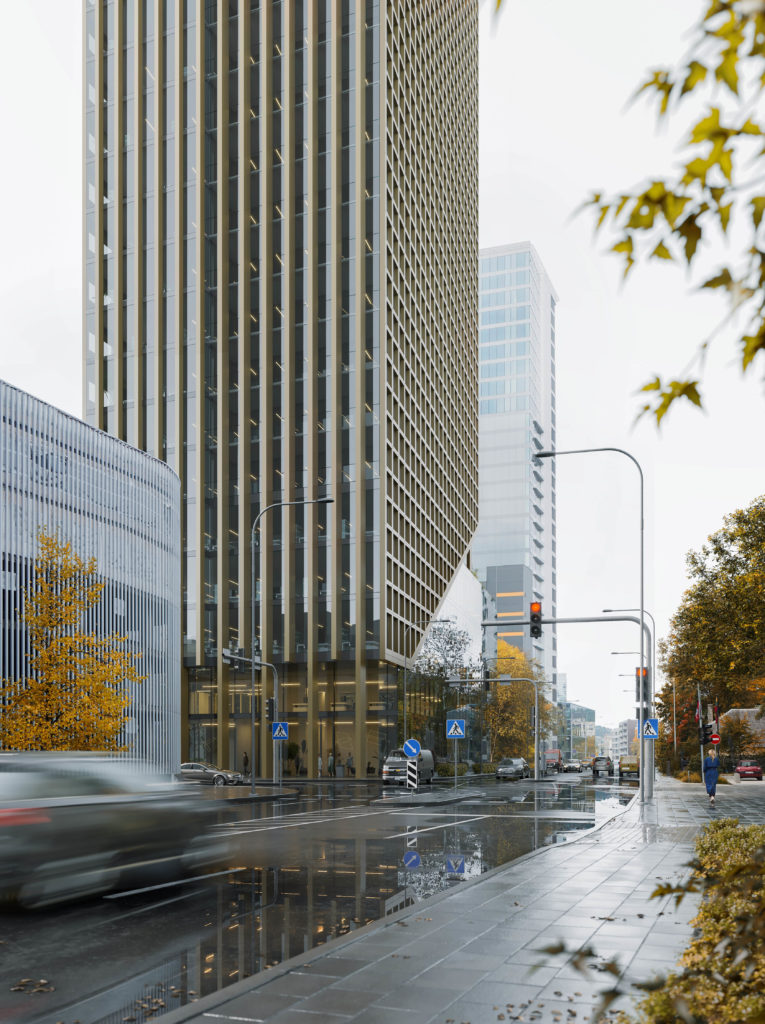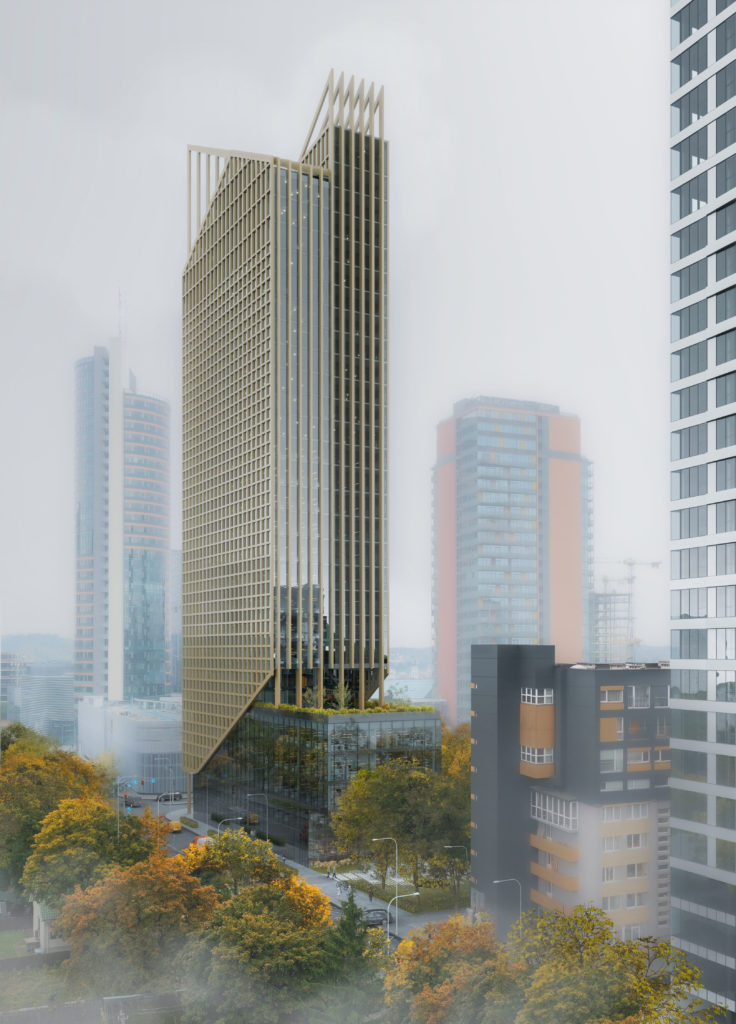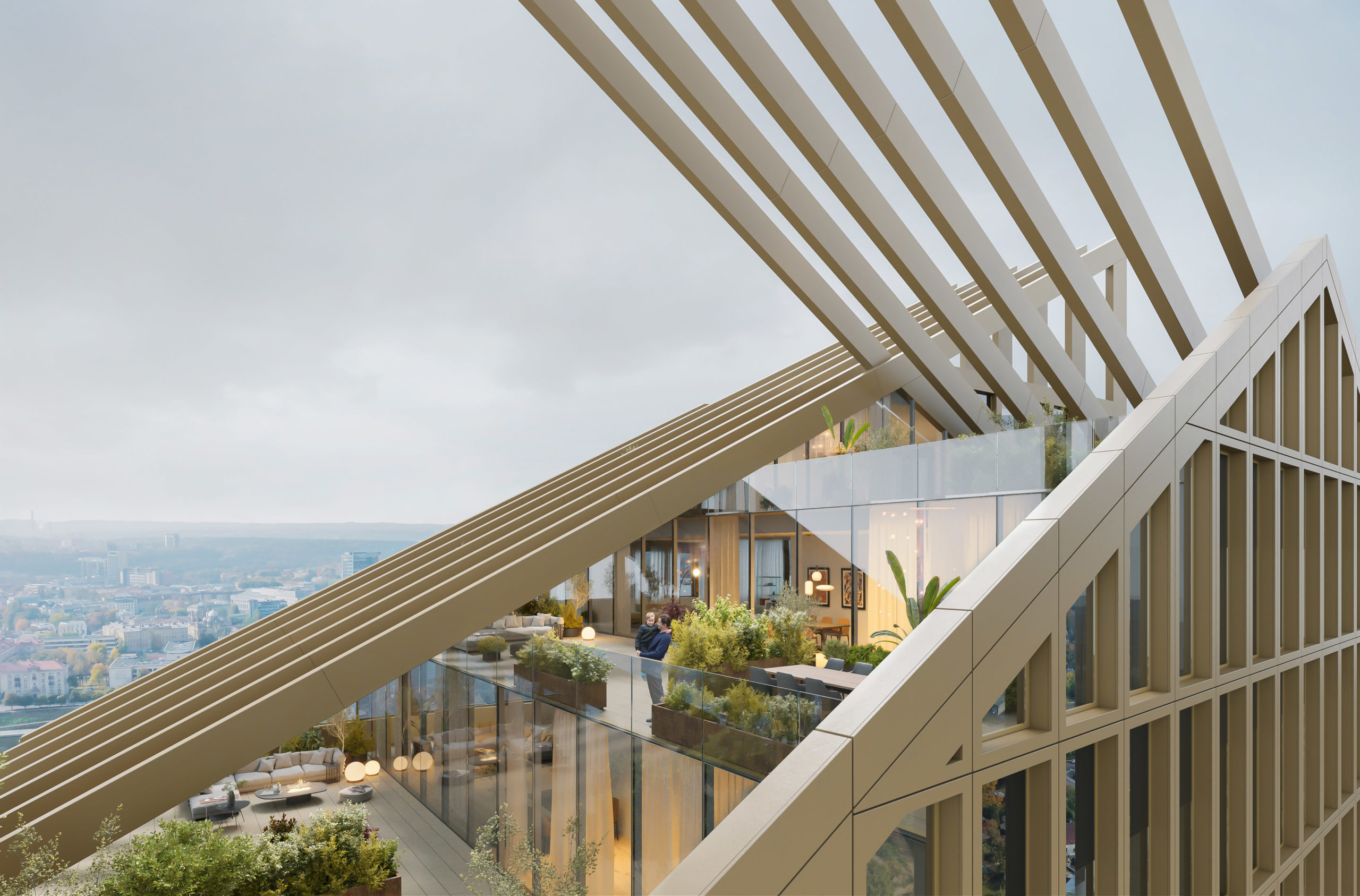Location
Vilnius
Year
2022
ARCHITECTS
Edgaras Neniškis
Rolandas Liola
Arūnas Liola
Justas Jankauskas
Greta Vasiliauskaitė
Emilija Minikavičiūtė
Kirilas Smotkin
Žilvinas Urbas
Kristina Žalytė
Vilnius
2022
Edgaras Neniškis
Rolandas Liola
Arūnas Liola
Justas Jankauskas
Greta Vasiliauskaitė
Emilija Minikavičiūtė
Kirilas Smotkin
Žilvinas Urbas
Kristina Žalytė
Every city is full of signs that tell different stories. Since ancient times, a city became a city only after receiving its own sign – the coat of arms. Some city signs are visible only to the chosen ones, while others are understood and read by everyone. The universal language of buildings always affects us. The strongest words of this language are high-rise buildings.
The new complex is a truly vertical city, as it will be possible to live, raise children, work, enjoy food or just relax, observing the city panorama or reading a book in the ‘sky square’. And, like every city, it must be able to change, and accept new functions, and challenges of new times, while at the same time maintaining the solidity of its expression and the expression universality of its facades.


The SIGNUM complex is located in the central part of the urban hill which completes the overall silhouette of the hill. When evaluating the viewpoints from the most important historical parts of the city, it is appropriate to move the highlights of the high-altitude hill somewhat to the north. The new building can help with this task. It is proposed to strengthen the verticality by using engineering elements, antennas and lightning conductors as additional means supporting the silhouette


The essential architectural idea of the building was determined by two essential aspects: the pursuit of a contextual relationship with the unique panoramas of Vilnius and the paradigm of elegant universality.
The binary composition of the top of the building is determined by the desire to respond in silhouette to the roofs of the Old Town, while at the same time emphasizing the top of the urban hill of the city. The ‘crown’ is designed in such a way that the vertical lines that start at the bottom of the building go up, circle the tower and go down. This not only gives the effect of lightness, but also the effect of compositional completeness.
